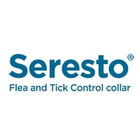
Introduction
If you’re constantly finding dog hair on your couch, clothes, or even your food, you’re not alone. Shedding is a completely normal process for dogs—it’s their natural way of getting rid of old or damaged fur. However, when your dog starts shedding excessively, it can become frustrating and sometimes even a sign of an underlying health issue.
Understanding why dogs shed, what’s normal, and how to manage it effectively can help you keep your pet’s coat healthy and your home cleaner. Let’s take a closer look at the causes of dog shedding and what you can do to reduce it.
Why Do Dogs Shed?
Dog shedding is a natural process where dogs lose old or damaged hair to make way for new growth. Most dogs shed year-round, but the amount of shedding can vary depending on their breed, health, diet, and the time of year.
Here are some common reasons your dog may be shedding more than usual:
Seasonal Changes:
Many dogs shed heavily in the spring and fall. In spring, they lose their thick winter coat to prepare for warmer weather. In the fall, they shed their lighter summer coat to grow a warmer one for winter.
Breed Characteristics:
Some breeds naturally shed more than others. For instance, Labrador Retrievers, Golden Retrievers, and German Shepherds are known heavy shedders, while Poodles and Bichon Frises shed very little because of their curly coats.
Diet and Nutrition:
A poor diet lacking essential fatty acids, vitamins, and minerals can lead to dull coats and excessive shedding. High-quality dog food rich in omega-3 and omega-6 fatty acids promotes a healthy skin and coat.
Stress and Anxiety:
Dogs may shed more when they are anxious, scared, or stressed. Loud noises, new environments, or changes in routine can trigger this reaction.
Skin Conditions or Allergies:
Allergies to food, pollen, or fleas can irritate your dog’s skin, leading to hair loss and itching. If your dog is scratching excessively, it’s best to consult a vet.
Hormonal or Medical Issues:
Conditions like thyroid imbalance, infections, or hormonal disorders can cause abnormal shedding or bald spots.
Normal Shedding vs. Excessive Shedding
It’s important to know what’s normal for your dog’s breed and coat type. All dogs shed to some extent, but excessive shedding could be a red flag.
Here are a few signs your dog’s shedding might not be typical:
- Bald patches or thinning fur
- Red, irritated skin
- Excessive scratching or licking
- Dandruff or foul smell
- Change in coat texture
If you notice any of these symptoms, schedule a visit to a veterinarian to rule out medical causes.
How to Reduce Dog Shedding
While you can’t completely stop shedding, there are several ways to manage it effectively.
1. Regular Grooming
Brushing your dog regularly helps remove loose fur before it falls around your home.
- Short-haired dogs: Brush once or twice a week.
- Long-haired dogs: Brush daily to prevent tangles and mats.
Using the right brush is key — for example, a de-shedding tool or slicker brush works great for double-coated breeds.
2. Bathing Routine
Bathing helps loosen and remove excess fur. Use a gentle, dog-safe shampoo designed for shedding control or sensitive skin. Avoid over-bathing, as it can dry out your dog’s skin and worsen shedding. Once every 4–6 weeks is ideal for most breeds.
3. Balanced Diet
Providing your dog with nutritious food that includes omega-3 fatty acids, zinc, and biotin helps maintain a shiny, healthy coat and minimizes shedding. You can also consider adding fish oil supplements, but always seek your vet’s advice before starting any new supplement.
4. Keep Your Dog Hydrated
Dehydration can cause your dog’s skin to become dry and flaky, leading to increased shedding. Make sure fresh, clean water is always available.
5. Manage Stress
Dogs under stress shed more. Keep your pet’s routine consistent, offer plenty of exercise, and provide mental stimulation through toys and playtime.
6. Regular Vet Check-ups
Routine vet visits help identify potential health problems early, ensuring your dog’s coat and skin remain in top condition.
Home Cleaning Tips for Dog Hair
Even with regular grooming, dog hair tends to get everywhere. Here are some quick tips to manage it at home:
- Use a lint roller or adhesive tape to quickly remove pet hair from furniture and clothing.
- Vacuum frequently, especially with a pet-hair attachment.
- Wash your dog’s bedding regularly.
- Invest in an air purifier to reduce pet dander and hair that circulates throughout the house.
When to See a Vet
If you’ve tried grooming, diet adjustments, and regular care but your dog is still shedding excessively or losing patches of fur, it’s time to consult your vet. Your veterinarian may recommend diagnostic tests such as skin examinations or blood analyses to identify potential allergies, infections, or hormonal imbalances.
Early diagnosis ensures effective treatment and helps your pet feel more comfortable.
Final Thoughts
Shedding is a normal and healthy part of your dog’s life, but understanding what’s normal versus what’s excessive makes all the difference. With proper grooming, nutrition, and care, you can keep your dog’s coat shiny, healthy, and minimize the mess around your home.
Remember, every dog is unique — so what’s normal for one breed might not be for another. A little patience, the proper routine, and regular vet visits will go a long way toward keeping both you and your furry friend happy.






